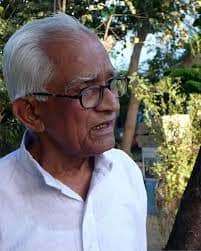
In 2018 a man passed away in Jabalpur. Though reasonably well-known in refined literary circles of Hindi and Gujarati readers, he has been unknown to a large majority of people even in these regions, let alone rest of the country. An artist by training and a professor of arts for whole of his working life, Amritlal Vegad has left behind us gems of literary works, sketches, and paintings, on the ways and views of life on the banks and basin of the river Narmada. The story of Amritlal Vegad is inextricably intertwined with that of the object of his devotion and adoration – Narmada.
For nearly three decades, till he was well into his eighties, Amritlal walked along the banks of the sacred river – through hills and jungles, amidst animals in the wild and people varying from the poorest Baigas of Dindori and Amarkantak and the Bhils of Shoolpani Jhaadi in western India, to thousands of ascetics, pilgrims and seekers, all of whom had their lives deeply imbued with the spirit of Narmada. The result was a treasure-trove of writings on these travels, sketchbooks, collages, and paintings, particularly a celebrated trilogy of books in Hindi and Gujarati, translated since then into Bangla, Marathi and English. Parts of these are included in the Hindi and Gujarati curricula in schools and universities. Even a Professor of Hindi at London University, a westerner, made it a compulsory reading in his course.
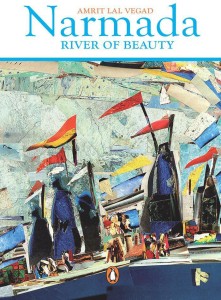
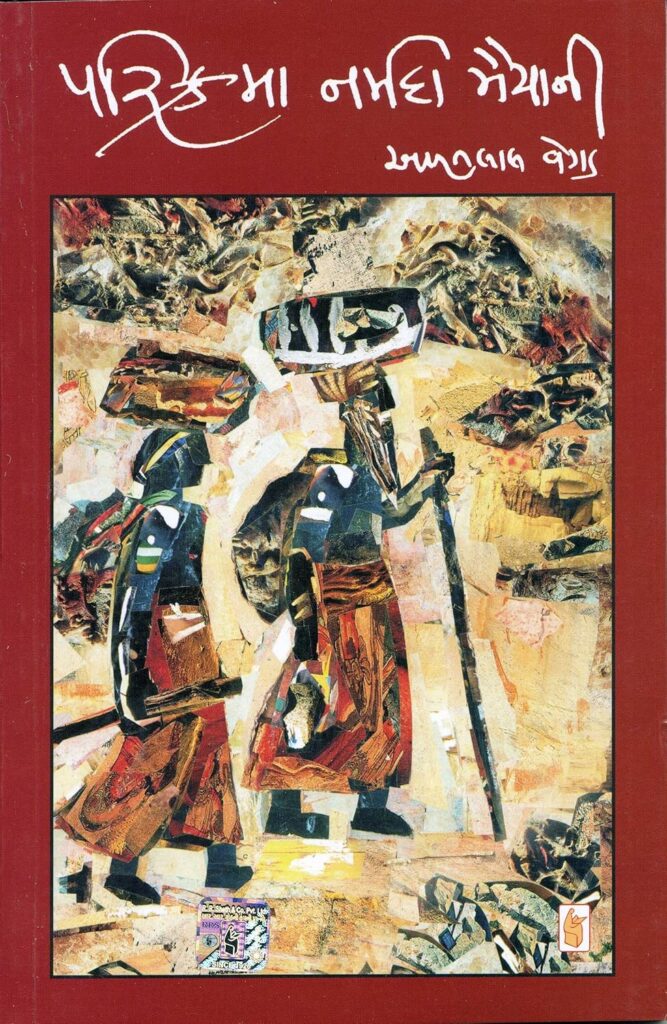
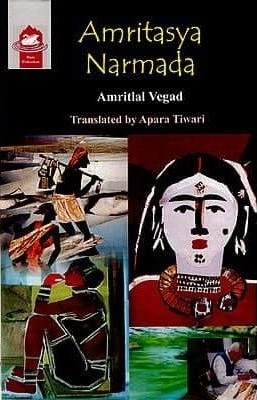
Early Life
Amritlal Vegad was born in 1928 in Jabalpur near Narmada’s banks, and lived a major part of his life there. His end too came in the same city. The Vegad family hailed from the Kuchh region of Gujarat and as a child Amritlal also attended a few years of primary schooling in a village school there. Thereafter he had his entire schooling from Jabalpur and chose to enroll in Tagore’s Viswa Bharati to pursue a training of fine arts. Though Tagore was no longer there, his redoubtable aura still loomed large over the cultural landscape of India and quite a lot of young people from all over India, having a proclivity towards a polished education in art and aesthetics yet preferred Viswa Bharati over other options.
At Santi Niketan
Amritlal spent 5 years in Santi Niketan, from 1948 to 1953. He studied at the famed Kala Bhavan (the Institute of Fine Arts) which was then headed by the redoubtable Nandalal Bose. Nandalal, himself a pupil of Abanindranath Tagore – the Poet’s nephew and a pioneer of the Bengal School of Art – was at that time, arguably the most celebrated artist in the country. Besides many of his timeless works, he had also employed his great talents quite widely to national and public causes – having contributed to the designs of the civilian awards – the Bharat Ratna, the Padma awards, and also, with his pupils the original copy of the Constitution of India, the National Emblem, and the prototype design of Gandhi’s ‘Dandi March’ on which countless paintings and sculptures have been done since then. Besides Nandalal, there were other great stalwarts present then at Viswa Bharati like Ramkinkar Baij and the visually-challenged painter Binod Behari Mukherjee. The Kala Bhavan itself produced and honed a fine line of great talents. A few years before Amritlal, a young graduate in Economics from Presidency College Calcutta, who was later to be known as the greatest artistic icon of Bengal after Tagore – Satyajit Ray – had also made his way into Kala Bhavan and come under the profound influence of Nandalal Bose, an influence he always acknowledged. Other notable names included Ray’s close friend Dinkar Kaushik, who later taught and headed the institution and who also wrote a fine biography of Nandalal, Rammanohar Sinha Beohar (who too, like Amritlal, hailed from Jabalpur) who was the main contributor to the Constitution design project and acted as a cultural emissary with China and the Far East, and one of the last great maestros of Santi Niketan – K.G. Subramanian. The Viswa Bharati, then truly lived up to the motto given by its illustrious founder in Sanskrit, ‘Yatra Viswam Bhavatyekanidam’ (where the world becomes one nest.)
Amritlal was to dedicate one of his books on Narmada to Nandalal “who gave him the vision to see beauty,” and never forgot to pay his obeisance to his Guru on the latter’s birthday on December 3rd, a date later made famous by that horrific Gas Tragedy that killed thousands of persons in Bhopal and permanently impaired many more, an event of which this writer incidentally happens to be a survivor and witness.
Growing up with Narmada
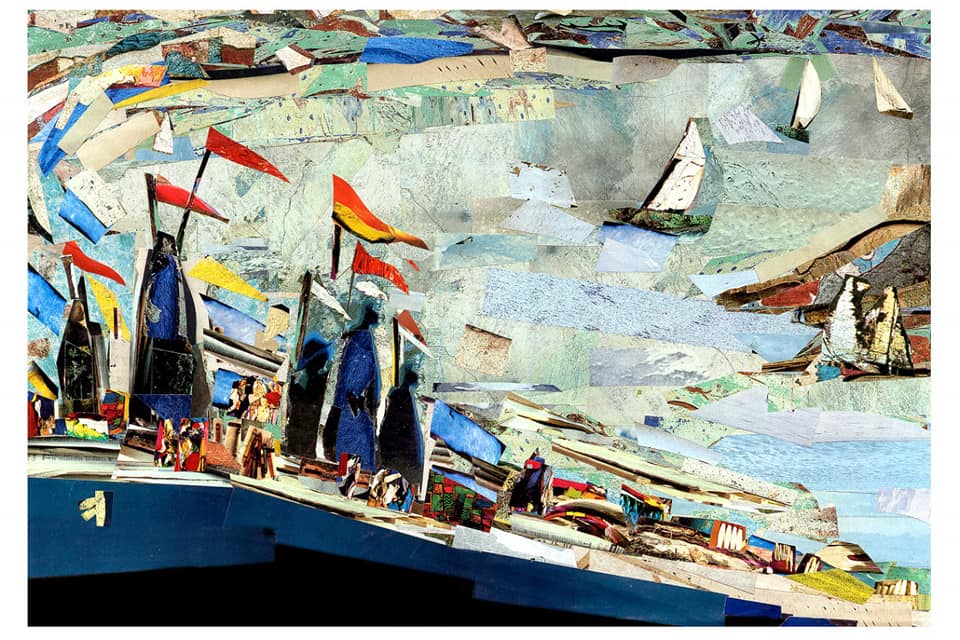
In his childhood Amritlal often used to accompany his father on foot to Bhedaghat, about 20 km from Jabalpur, famous for its stupendous sites – the marble rocks and the waterfall – ‘Dhuandhar’ – literally the smoky waterfall – the water droplets become so fine after the fall that they assume the appearance of smoke. In these boyhood walks he saw many a pilgrim dressed as ascetics, walking with their belongings, often barefoot, by the side of the river. These were his first experience of the ‘Parkammavasis’ (as the persons who undertake this 3300 km circuitous walk are called.) These sights and resounding greetings of ‘Narmade Har’ that mark whole of this belt (also known as the Narmadakhand) were indelibly etched on the young boy’s mind.
Amritlal’s Travels
It was only when he was 49 that Amritlal finally resolved to undertake a walk on the Jabalpur-Mandla segment (that was before the time Bargi dam had come into being, changing the geography of the region like many other dams on the western side of the river.
He was usually accompanied by friends and pupils, and in later walks by his admiring readers. They stopped at villagers’ homes, local temples, often under trees, as is done by all Parikramavasis. Usually Amritlal chose the months of October-November or March-April for a period of a fortnight or so for his walks. There was a break of nine years when he could not do so. He finally completed the Parikrama in 1999, thus, taking twenty-two years. He was 71 then.
Amritlal did not stop his walks even after that. He took up a repeat tour of many segments and documented the changes he saw in social life. At many places the geography had changed immensely due to construction of huge dams. This was most true in the western half of the river, where dams like Indira Sagar – which is region of Harda and Khandwa districts, smaller dams like Omkareswar and Maheshwar, and most famously and controversially, the Sardar Sarovar Dam in.Gujarat, with its backwaters in the three states of Gujarat, Madhya Pradesh, and Maharashtra were located. The construction of these dams witnessed a huge protest movement right from the eighties onwards, known as the Narmada Bachao Andolan. The famed tallest statue in the world – the ‘Statue of Unity’ is located in the Sardar Sarovar near the village of Kevadiya.
Amritlal’s works
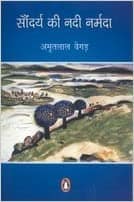
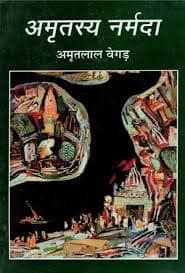
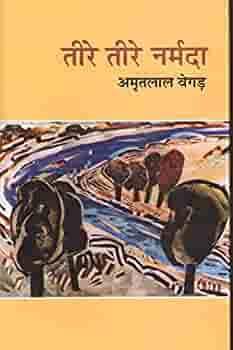
Amritlal published his first book of his Narmada Trilogy ‘Saundarya ki Nadi Narmada’ which describes not his entire circumambulation but his journey from Jabalpur to the origin Amarkantak and then till the sea and a little more. He had a hard time finding a publisher till an empathetic bureaucrat who was heading the Narmada Valley Development department read the manuscript and found it to be a stupendous work, a social document of the region as well as having high literary merit. He impressed upon the mind of the minister-in-charge to commission its printing to the state’s ‘Hindi Granth Akadami.’ The book became a huge success for its evocative character, fluid style, and endearing wit – often of the self-mocking kind. It won several acclaims and drew the attention of readers from all over the country. After about a gap of nine years Amritlal restarted his walks on the northern banks – though not in exact sequence – and finally managed to complete his Parikrama. In his later walks, when he was in quite advanced age, he was often accompanied by people whom he never knew but had come in contact with him after being charmed by reading his books and articles. His wife too often accompanied him in these later walks. His second book ‘Amritasya Narmada’ too received considerable acclaim in which he describes the remaining part of his Parikrama. The third book ‘Teere Teere Narmada’ deals with his repeat walks on certain segments of the Parikrama circuit and also his walks around Narmada’s tributaries like Budhner, Banjar, and Shakkar. His books can be purchased at very reasonable prices from Madhya Pradesh Sahitya Granth Akadami, though they carry much higher prices from online vendors. Some admirers have also recorded his books on the internet with interesting references on the side. He won the prestigious ‘Sahitya Akadami Award’ for his Gujarati work ‘Saundaryani Nadi Narmada’ and the prestigious ‘Mahapandit Rahul Sanskritayan Award’ conferred for travelogue writing. His sketches, collages, and paintings also got him the ‘Shikhar Samman’ from the MP State Government.
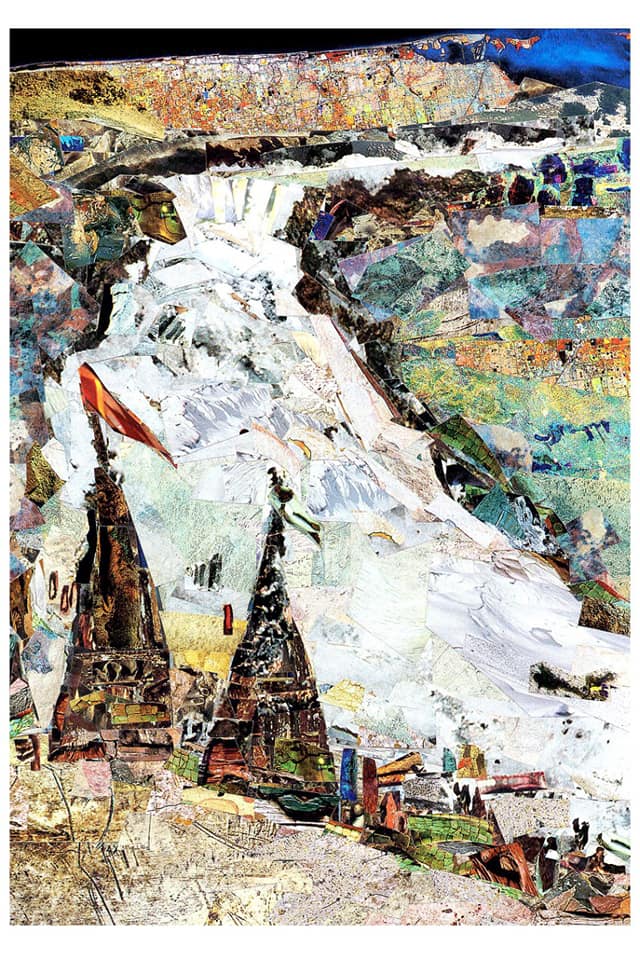

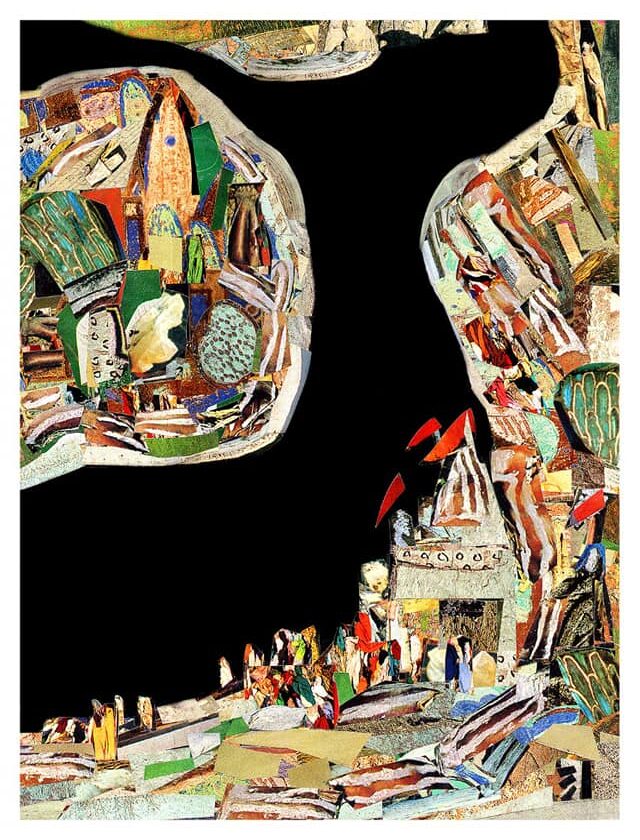
Unto the Mother
Amritlal considered himself a second-rate writer and a second-rate artist – he sometimes also called himself as fourth-rate. For long years in his career before his intensive engagement with Narmada, he had felt that Providence could have been much more kind to him had he been endowed with only one gift out of the two, but of a higher order. He later felt that it was just right because only by having both these gifts in some measure, he could write about Narmada and also create pictures in sketches as well as coloured paintings trying to capture to some extent the immeasurable beauty of Narmada and the life in that region. Amritlal says to his readers that he could present only a tiny portion of the sublime beauty of Narmada and that in his life he could not do the Parikrama as per its conventions, though he did say that even at home he busied himself mostly in doing the ‘homework assignments’ Narmada gave him. In his characteristic humility, he writes that this life of his had only been a preparatory phase for the Parikrama, which he really hoped to do in the next life. He regretted that because of affairs of the world he had to leave Narmada and retreat every now and then to his own cocoon, but poignantly wished and prayed to Mother Narmada that she should grant him the final refuge in her. One would like to think that having moved on from the mortal realm, Amritlal Vegad now reposes undisturbed in the Mother’s lap, something hoped and wished by millions of others in the Narmadakhand.